MP Board Solutions Class 9 Science Chapter 2 – Is Matter Around Us Pure
MP Board Solutions for Class 9 Science Chapter 2 – Is Matter Around Us Pure are essential for understanding key Chemistry concepts in the MPBSE curriculum. These well-structured answers help students grasp topics like mixtures and pure substances, types of solutions, separation techniques, and more. Designed as per the latest syllabus, these solutions strengthen conceptual clarity and improve exam preparation. Ideal for revision and practice, they encourage logical thinking and scientific understanding, making them a valuable study tool for scoring well in Class 9 Science exams.
MP Board Solutions Class 9 Science – Is Matter around us Pure – Exercise Images
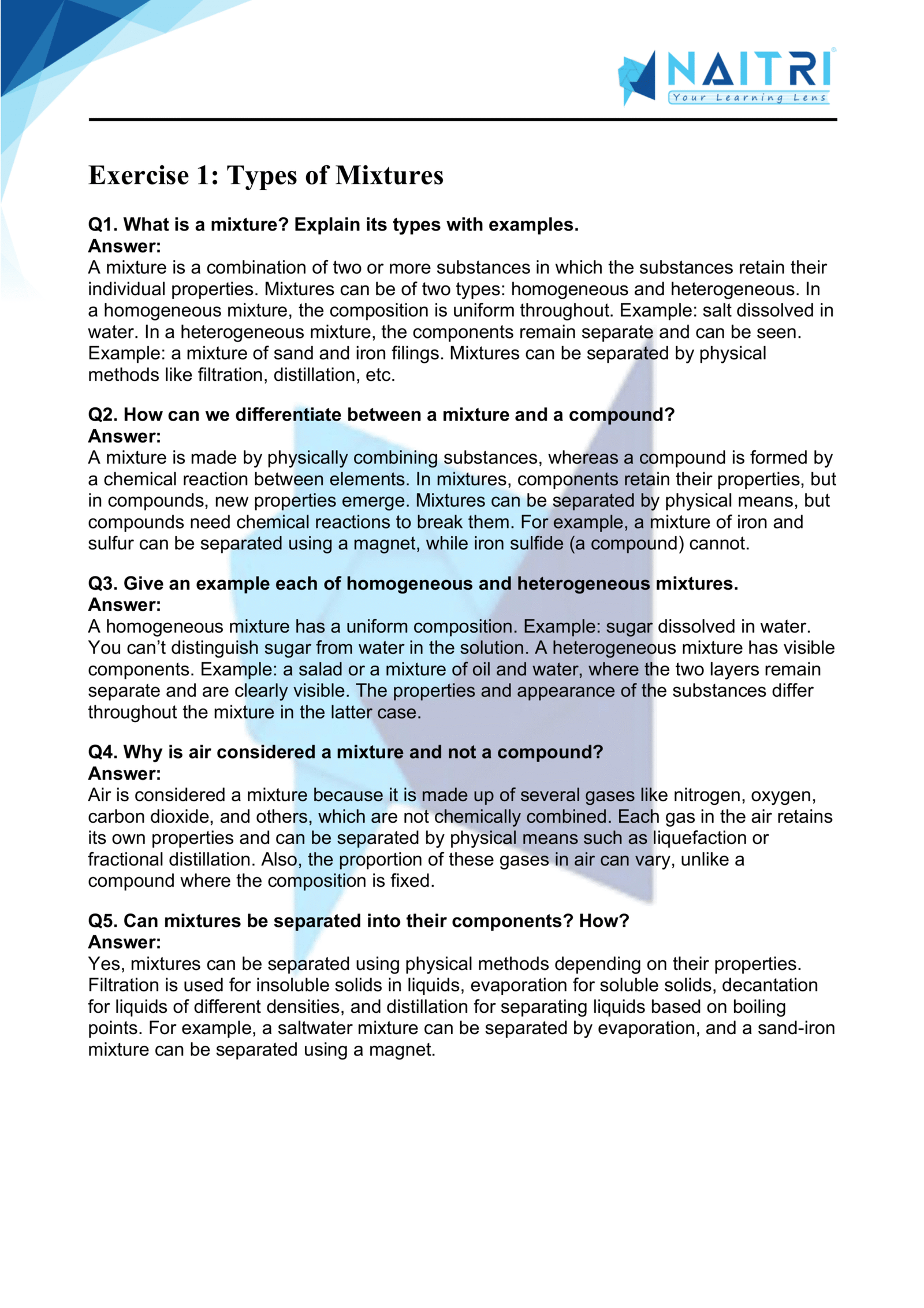
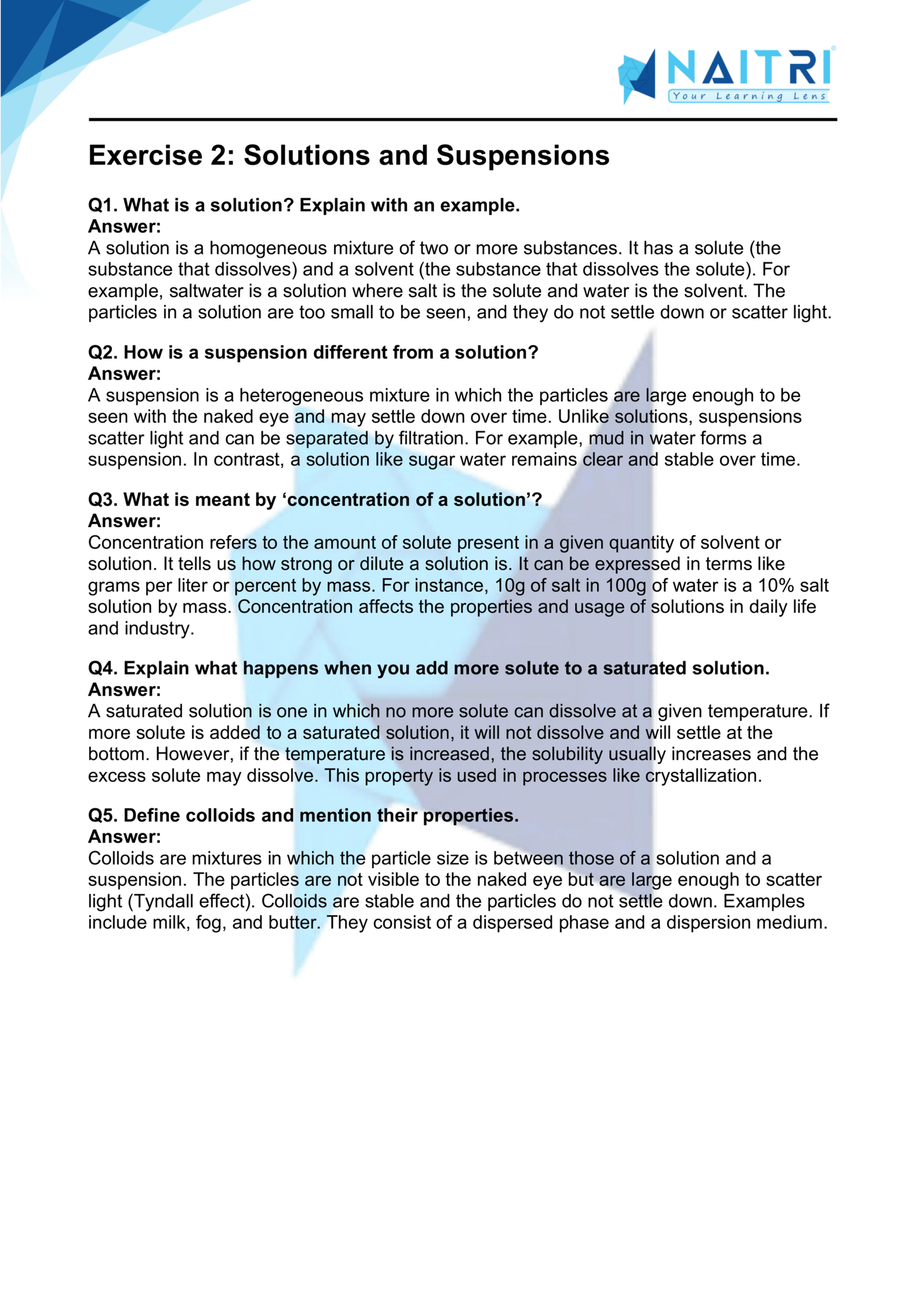
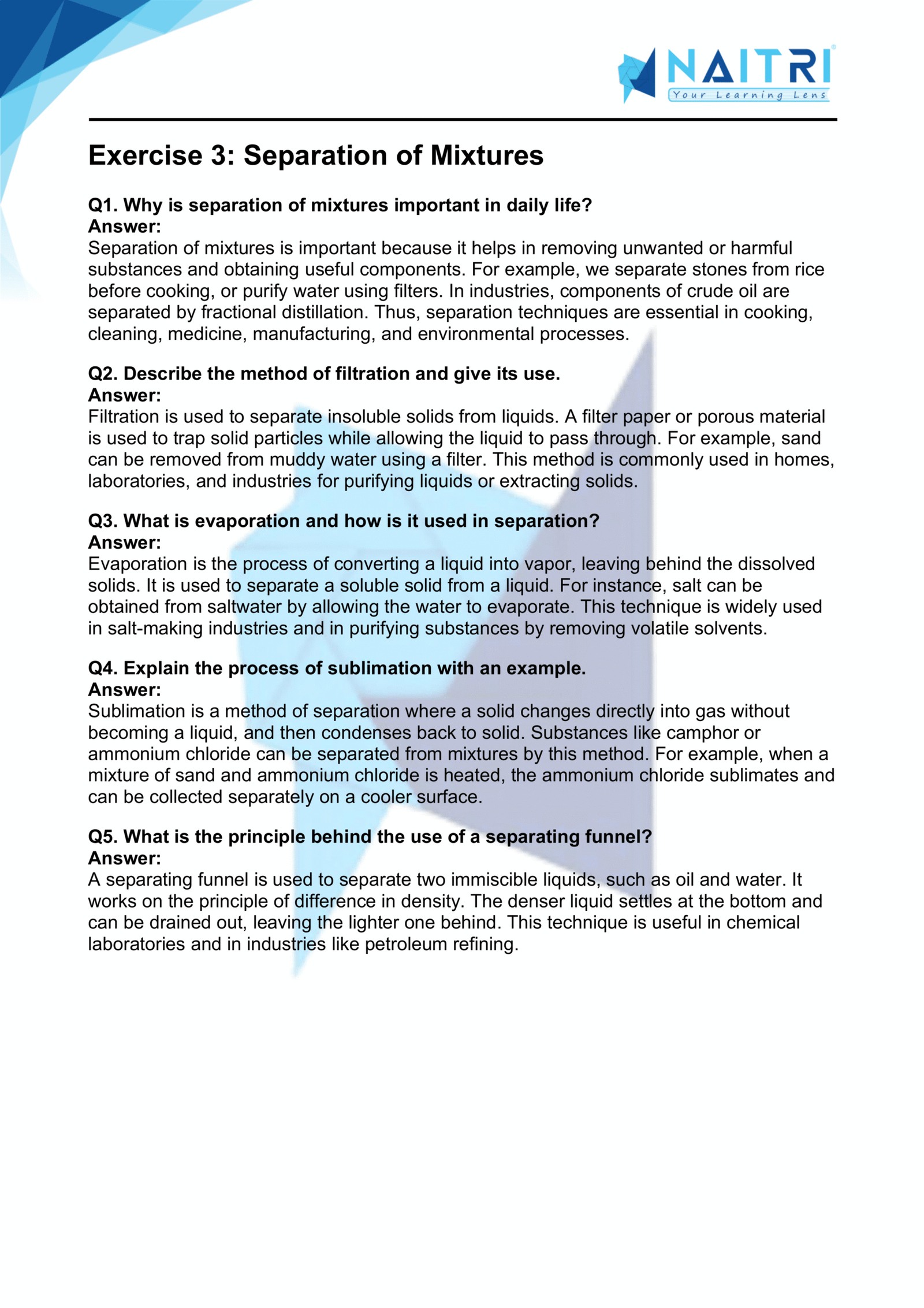
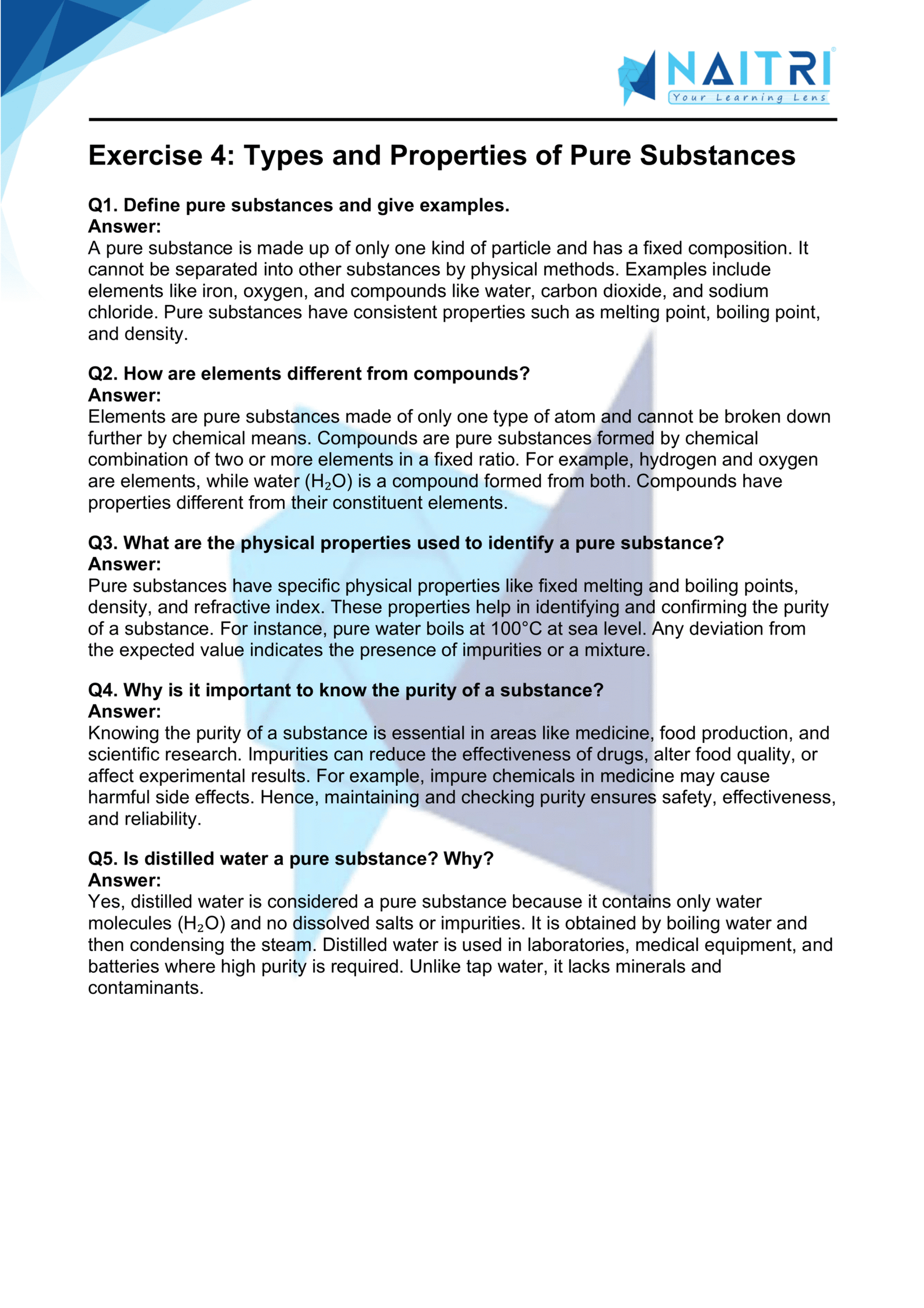
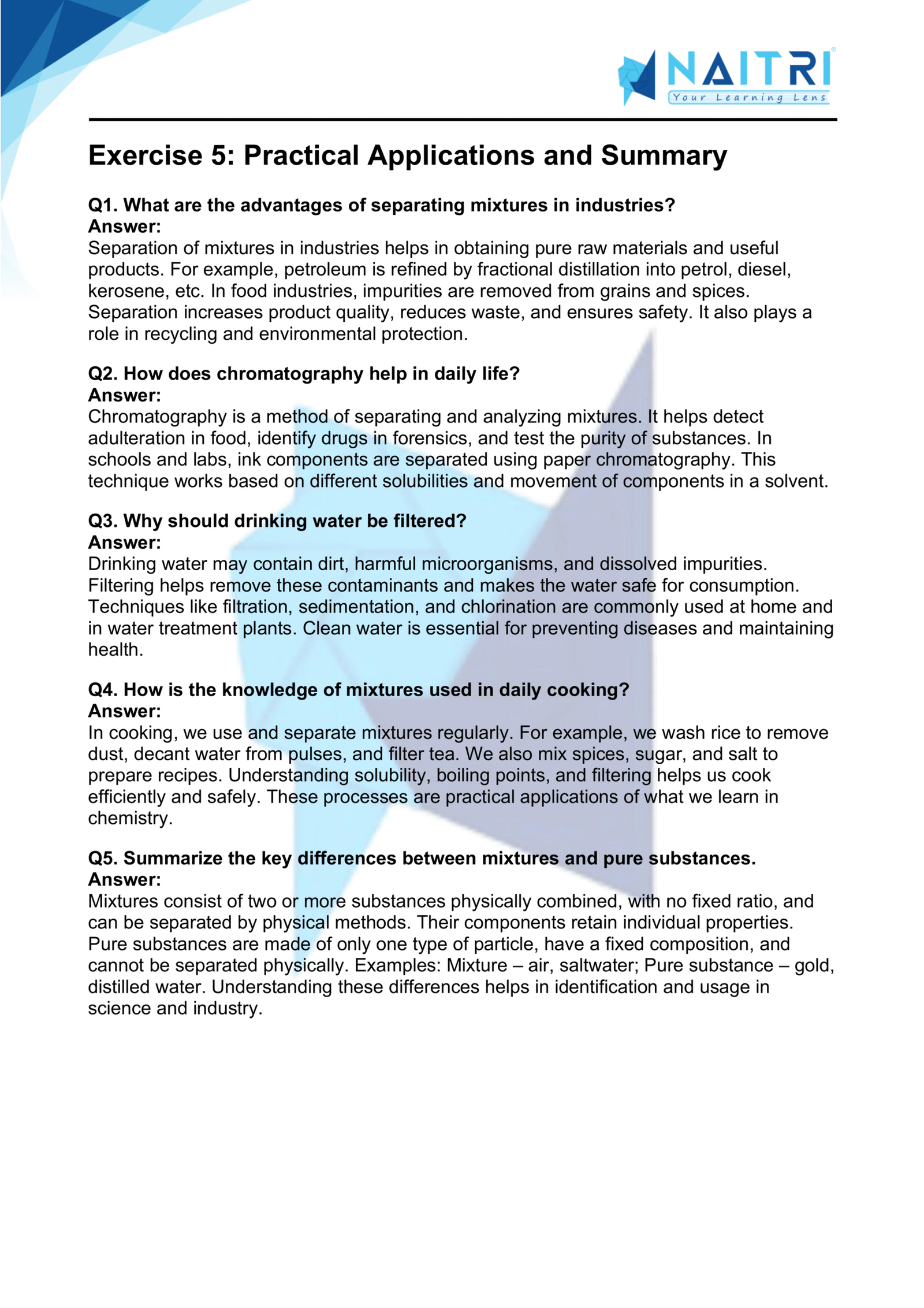
Experience Science Like Never Before – With AR!
Understanding Is Matter Around Us Pure? is now more exciting and immersive! With the NAITRI App, you can explore complex science concepts through Augmented Reality (AR). See mixtures separate, solutions form, and purification methods unfold — right in front of you. Our AR-powered lessons make learning interactive, 3D, and fun, helping you retain concepts better and enjoy every topic.



Visualize . Interact . Understand . The future of learning is here
Is Matter Around Us Pure – Important Questions with Answers
1. Define solution with example.
Answer: A homogeneous mixture of substances.
Example: Salt in water.
2. Differentiate homogeneous and heterogeneous mixtures.
Answer:
Homogeneous mixtures are uniform (e.g., sugar solution).
Heterogeneous mixtures are non-uniform (e.g., oil and water).
3. Define colloid with example.
Answer: A mixture with medium-sized particles that don’t settle.
Example: Milk.
4. What is the Tyndall effect? Give one example.
Answer: Light scattering by colloidal particles.
Example: Fog.
5. Name two methods to separate mixtures.
Answer: Filtration and evaporation.
6. What is distillation? When is it used?
Answer: Distillation separates liquids based on boiling points.
Used to obtain pure water from salt water.
7. Explain chromatography with one application.
Answer: It separates mixture components based on movement on a medium.
Application: Separating ink pigments.
8. Difference among solution, colloid, and suspension.
Answer:
Solution: Clear, particles <1 nm, no settling.
Colloid: Cloudy, particles 1–1000 nm, no settling, shows Tyndall effect.
Suspension: Particles >1000 nm, settle on standing.
9. Define alloy and state whether it is pure.
Answer: Homogeneous mix of metals; not a pure substance.
10. Why can mixtures be separated physically but compounds cannot?
Answer: Mixtures are physically combined; compounds are chemically bonded.
11. Define solute and solvent.
Answer: Solute is dissolved substance; solvent dissolves the solute.
12. Why is water called a universal solvent?
Answer: Because many substances dissolve in water.
13. Define suspension. Give a characteristic.
Answer: A heterogeneous mixture whose particles settle on standing; visible particles.
14. Differentiate filtration and centrifugation.
Answer: Filtration uses gravity; centrifugation uses centrifugal force for separation.
15. When is evaporation used?
Answer: To separate a non-volatile solute and remove the solvent.
16. When is distillation preferred over evaporation?
Answer: To collect both liquid and solute, especially when solvents have different boiling points.
17. What is precipitation? Give example.
Answer: Formation of an insoluble solid.
Example: Mixing solutions of barium chloride and sulfuric acid produces barium sulfate precipitate.
18. Define crystallization.
Answer: Recovery of pure crystals from a saturated solution by evaporation.
19. What is chromatography used for in food testing?
Answer: To detect food dyes and adulterants.
20. Define purity test for any substance.
Answer: Checking fixed melting or boiling point indicates purity.
21. What are isomers? Give an example.
Answer: Compounds with same formula but different structures.
Example: Ethanol (C₂H₅OH) and dimethyl ether (CH₃OCH₃).
22. What is the composition of air?
Answer: Approx. 78 % nitrogen, 21 % oxygen, 1 % other gases.
23. Is tap water pure? Why not?
Answer: No; it contains dissolved impurities and minerals.
24. What is molecular mass?
Answer: Sum of atomic masses in a molecule.
25. Define chromatography and mention two types.
Answer: Technique to separate mixtures.
Types: Paper chromatography and thin-layer chromatography.
Is Matter Around Us Pure? helps students differentiate between pure substances and mixtures, a key concept in understanding materials in daily life. Students learn about solutions, colloids, and suspensions, as well as how to separate mixtures using methods like filtration, evaporation, and chromatography. This chapter develops a clear understanding of physical and chemical purity and connects directly with local practices like separating grains, purifying water, and preparing herbal mixtures common in MP households.
Related Chapters You May Like
Download Naitri App
Easy, Visual Learning — Right on Your Phone
Learn with Augmented Reality! The Naitri app makes CBSE and MP Board concepts interactive and fun — even in low-resource settings. Watch lessons, complete homework, take tests, and track progress — all in one place. Anytime. Anywhere.
Available on








